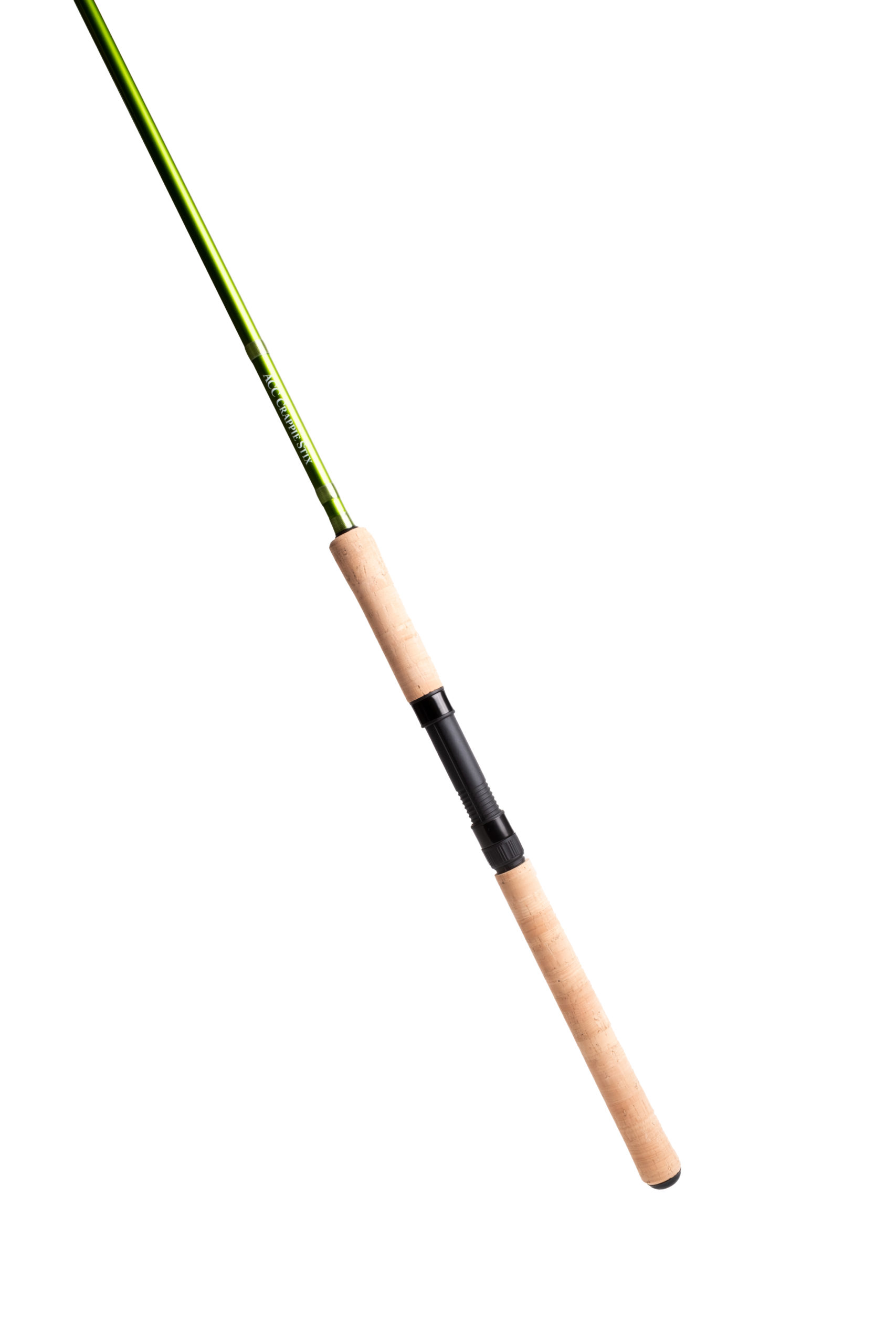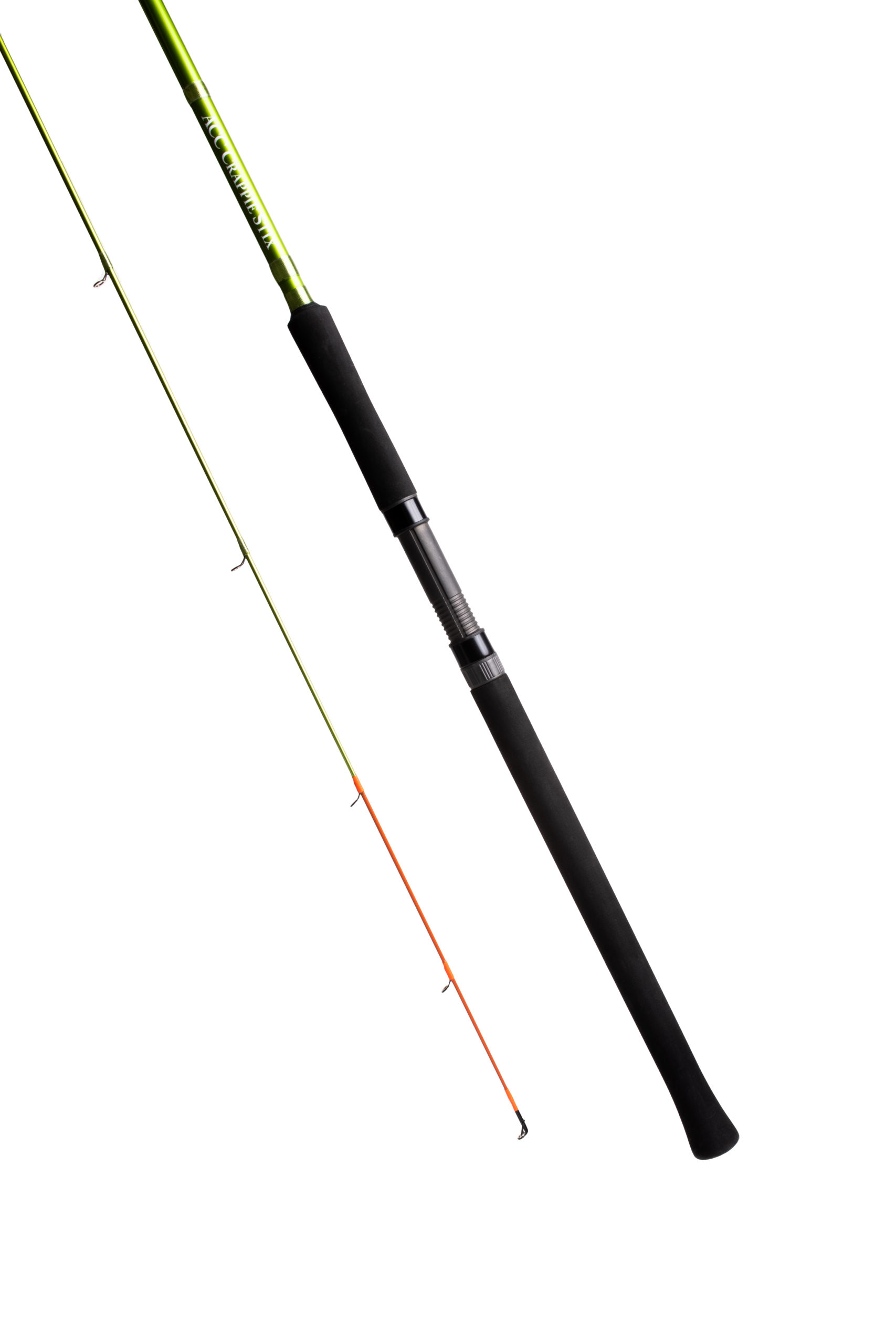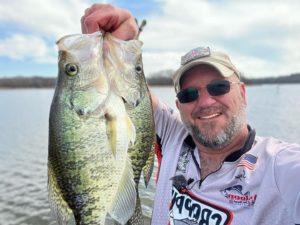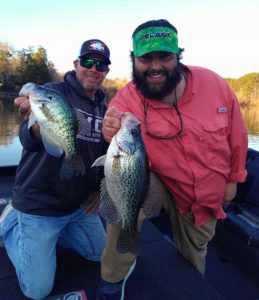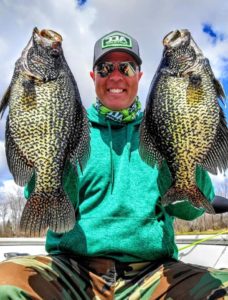Target bigger crappie in pre-spawn
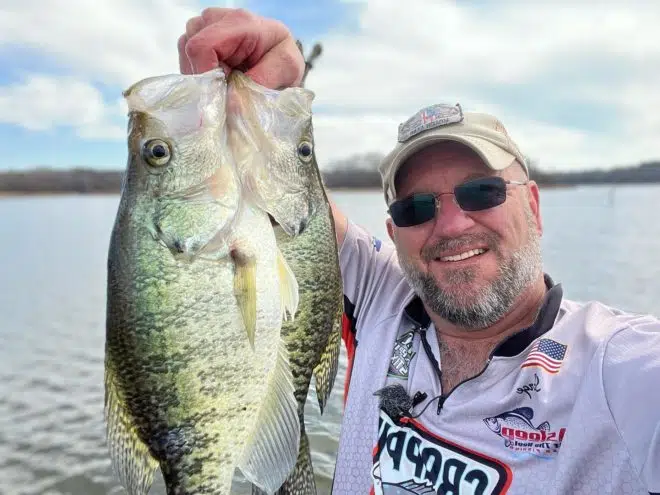
By Greg McCain
The time of the year has arrived when crappie are in various stages of the spawn.
Across the country and even across the Canadian border, the bigger females arrive at staging areas just outside spawning areas. They locate on contour lines, ledges, or dropoffs, just about any structure with a depth change just off spawning areas. If the spot has some type of wood cover, the more likely the females are to hold until the urge strikes them to spawn.
The crappie, at least the smaller males, are relatively easy to catch. They congregate in water ranging from a few inches deep out to about 10 feet as they await the arrival of females ready to lay. The females stay shallow for only a few fleeting hours, depositing the eggs that comprise the next generation of the crappie population. Then they move from the spawning area, perhaps not that far away but still away from the nests where the males will aggressively guard fry for the next several weeks.
A well-known crappie fisherman once told me we were probably sitting on the motherlode of big fish as we were casting into about two feet of water and catching fish after fish. Among the 50 or so we caught on about a 100-yard stretch of bank, only two or three were over 12 inches. The vast majority were males from eight to about 11 inches long.
I quizzed him about where the bigger females were located. His response, “Probably under the boat.”
When I asked a similar question to members of the ACC Crappie Stix pro staff recently, I got basically the same type of answers. How do you target pre-spawn females? The basic theme that ran through the thread of responses: For pre-spawn females, focus on slightly deeper water away from the bank or spawning area.
“This is about all I do,” said Chris “Sarge” Gill (Asleep at the Reel on YouTube), who targets pre-spawn fish in Texas lakes. “I target the spawning females in the staging areas, about 10-15 feet of water on timber. These girls stage and feed before laying eggs, then return to the staging area before slowly moving out.
“Right now, they are moving in but soon they will be in three-five (feet) on timber just waiting for a snack. As these bait balls come in, they will feed and then go right back to the tree.”
Other pro staffers shared similar scenarios, whether in the South or in other regions. A go-to approach for finding pre-spawn females is to look for those fish staging just outside spawning zones.
“I do this a lot,” said Alabama guide and ACC pro staffer Jeff Jowers (follow Southern Scale’s Guide Service on Facebook). “Actually I just walked in the door from doing this very thing, preparing for an upcoming tournament. I start my search for the quality fish – pre-spawn females – adjacent to spawning areas.
“For instance, if I find a dock holding males, I’ll focus on the deeper water just outside and around that particular dock. Usually she’ll be suspended out in open water just outside the area waiting on everything to get right before she makes her push. It could also be on a flat or in the mouth of a pocket right off the creek channel. There you can find multiple females out in open water suspended.
“You just have to bypass the eaters and tap the breaks for the bigguns. If I find a brush pile covered up with dinks, I’ll sweep the area in search for the better fish holding in open water near that area.”
Mississippi guide Mark Hamberlin (DD214 Guide Service on Facebook) follows a similar process in finding the bigger females.
“On Lake Washington (Mississippi land locked oxbow), the males hit the trees when the water temp hits the mid 50s,” he said. “Females stage up at the next contour line and move in and out of the trees while waiting to spawn.”
Only in the extreme north, actually across the Canadian border, did a pro staffer talk about shallow-water pre-spawn females. Yan Rochon loves to target the bigger fish immediately after ice out on Canadian waters.
“As the ice just leaves us, we get on the pre-spawners right away in the muddy shallows ranging from two to five feet looking for clump vegetation or growing lily pads,” he said.
Pick your preference of presentations for catching the pre-spawn trophies. Mark said a variety of approaches work well on Lake Washington, an idea that probably translates to most fisheries.
It is a fairly shallow lake so casting to them, pulling jigs/cranks with planer boards, or spider rigging are all effective methods,” he said.
Pre-spawn fish, especially those about to make the move to spawning areas, can be finicky. However, most are still in a feeding mode as the spawn approaches.
“This time of year they will usually hit just about any bait,” Chris said. “Because there are usually so many in the area, I do not follow or chase unless it is the biggest fish I have ever seen. Most are very aggressive but there will still be some that want a steak over a hamburger.”
Charlie Burrow (GO FISH with Charlie Burrow on YouTube) makes a similar point.
“Once a fish is located, it’s just a matter of determining the color and presentation they prefer,” he said. “On the east Texas lakes I fish, this changes day to day and sometimes from morning to evening.
“I recently experienced a day that produced 15 slabs over two pounds each. They would do a u- turn to eat your jig. Same water 5 days later, and the fish would leave a vapor trail if you got within 15 feet. Best advice I can give is if you’re seeing fish but she’s giving you the cold shoulder, change your approach, color, or presentation.”
Jeff does just that chasing slabs, mainly on the Coosa River impoundments in south-central Alabama. He notes that persistence can be rewarded.
“For me there’s no different technique I use to catch these fish,” he said. “Just cast to each individual fish and study her behavior. If she doesn’t react to a moving bait, I’ll pull the long rod out and dead stick it to see if that changes her mind.
“I will spend a lot of time on one single fish given I’ve determined she is worth it. I have followed a fish a long way and made multiple attempts before she finally committed to my offering, and it was worth every colorful word.”
Fishing for Canadian black crappie, Yan offers some typical advice for pursuing shallow pre-spawners but also offers an atypical approach as well.
“We use floats for the most part, and we prefer the Paddle Fish Mini from Target Baits Lures two-three feet under the floats,” he said. “We also use top-water lures such as floating raps in the evening at sunset. Pre-spawn always brings the hype of open-water crappie fishing here in Quebec.
Regardless of the approach, pre-spawn fishing offers the potential to produce the biggest fish of the year and perhaps the most consistent action on the biggest crappie in a particular fishery..
“l’d have to say it’s definitely my favorite time of year and my favorite thing to do,” Jeff said.




